Table of Contents
The UNESCO Sites in Serbia have resulted from the recognition of 5 cultural and natural landmarks as UNESCO World Heritage Sites in Serbia and 11 locations on the Serbia UNESCO tentative list. These tourist sites in Serbia are acknowledged for their unique and valuable cultural, natural, artistic, and historical significance and are preserved for future generations to enjoy.
In addition to these 5 sites in the Serbia UNESCO list, there are many other places to travel to Serbia that are being considered for UNESCO recognition. These sites, listed on the tentative list, showcase the rich cultural heritage of the country and are waiting for approval to join the prestigious and famous World Heritage Sites list.
To help visitors discover these remarkable Serbia tourist attractions, we have put together an interactive map of the UNESCO sites in Serbia.
Serbia UNESCO Map
Click markers to show information and photo.
World Heritage Sites in Serbia
UNESCO World Heritage Sites in Serbia
There is 5 UNESCO World Heritage Site in Serbia. All of these three sites are listed under the Cultural category.
- Gamzigrad-Romuliana, Palace of Galerius
- Medieval Monuments in Kosovo
- Stari Ras and Sopoćani
- Stećci Medieval Tombstone Graveyards
- Studenica Monastery
UNESCO World Heritage Sites in Serbia are protected locations for their cultural and natural importance.
Gamzigrad-Romuliana, Palace of Galerius
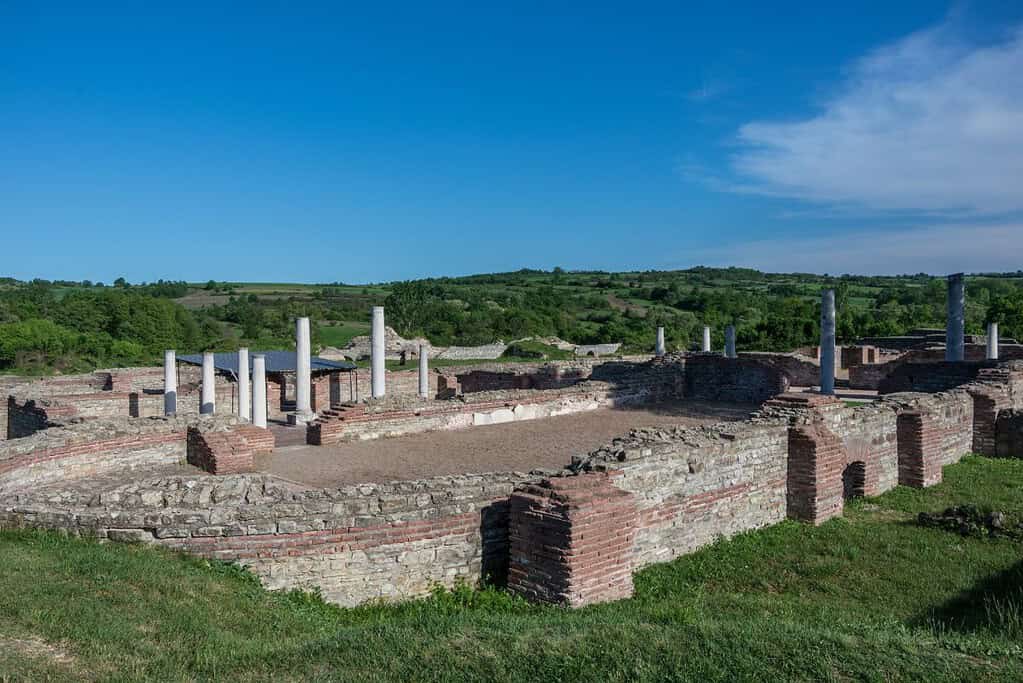
Gamzigrad-Romuliana, also known as the Palace of Galerius, is a UNESCO World Heritage Site in Serbia. This archaeological complex showcases the remnants of a majestic palace built by the Roman Emperor Galerius in the late 3rd and early 4th centuries. The site comprises fortifications, temples, thermal baths, and a mausoleum, all constructed with remarkable craftsmanship. The palace complex offers a glimpse into the opulence and grandeur of the Roman Empire, featuring intricate mosaics, imposing columns, and architectural marvels that reflect the fusion of Roman and Byzantine styles. Gamzigrad-Romuliana stands as a testament to the region’s rich history and cultural heritage, allowing visitors to explore the legacy of one of the most influential empires in history.
Medieval Monuments in Kosovo
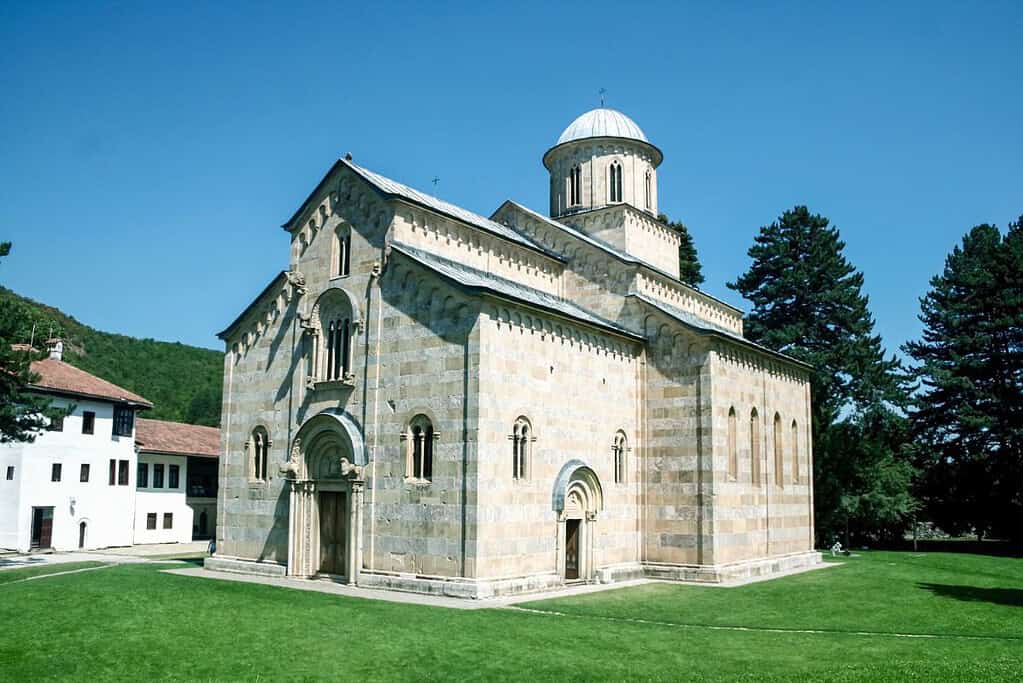
Medieval Monuments in Kosovo is a UNESCO World Heritage Site in Kosovo. This site comprises four Orthodox Christian monasteries: the Patriarchate of Peć, Gračanica Monastery, Visoki Dečani Monastery, and the Church of the Virgin of Ljeviš. These medieval monuments showcase remarkable examples of Byzantine and Serbian architectural styles and hold significant cultural and historical value. The intricate frescoes, decorative details, and religious significance make them an essential testament to the region’s rich heritage. The Medieval Monuments in Kosovo symbolize cultural diversity and historical importance in the heart of the Balkans.
Stari Ras and Sopoćani
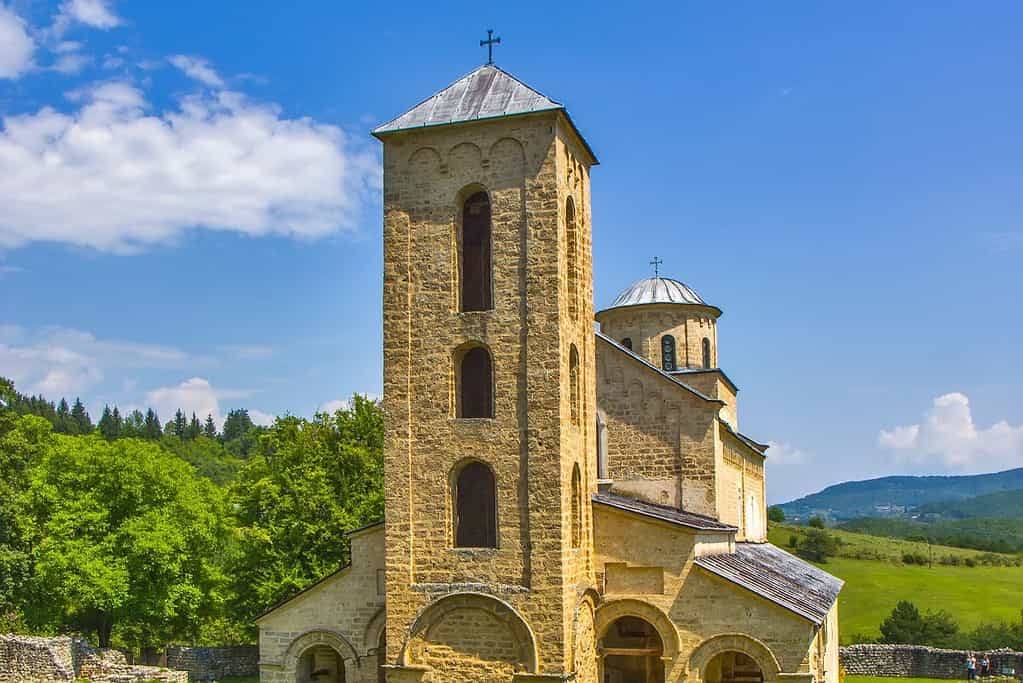
Stari Ras and Sopoćani, located in Serbia, are UNESCO World Heritage Sites with great historical and cultural significance. Stari Ras was once the capital of the medieval Serbian state and played a crucial role in the country’s history. It features impressive archaeological remains, including fortifications and churches, showcasing the architectural heritage of the Byzantine and medieval periods. Sopoćani, on the other hand, is renowned for its exquisite 13th-century Serbian Orthodox monastery. Adorned with stunning frescoes, it exemplifies the time’s remarkable artistic and religious achievements. Stari Ras and Sopoćani provide visitors with a captivating glimpse into Serbia’s rich past and cultural heritage.
Stećci Medieval Tombstone Graveyards
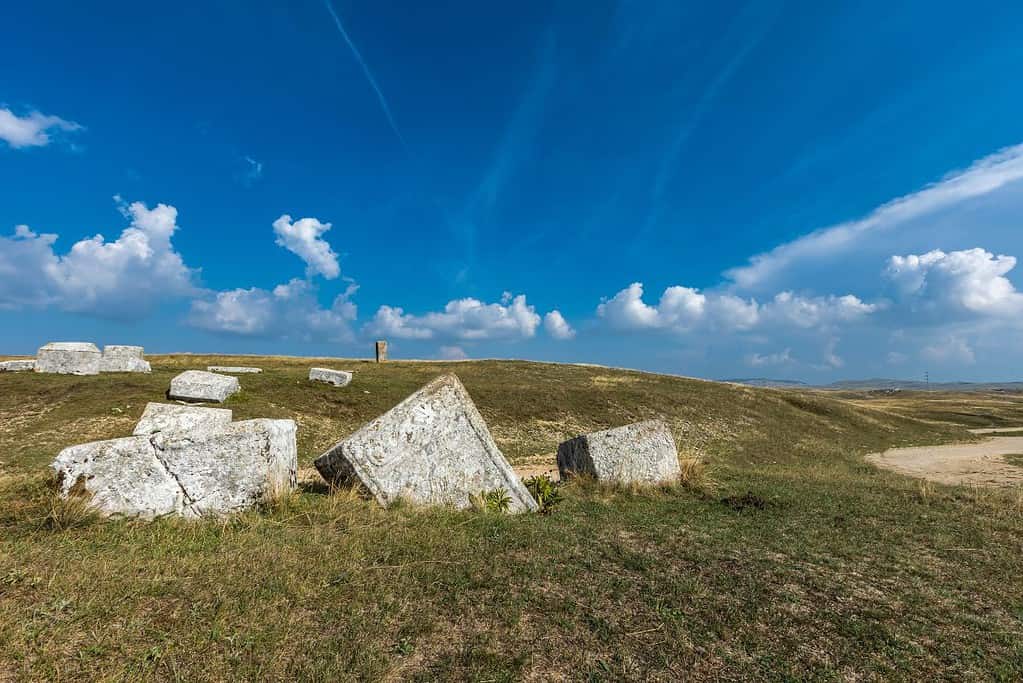
Stećci Medieval Tombstone Graveyards is a UNESCO World Heritage Site located in Serbia. These graveyards are unique and significant historical landmarks that showcase the rich medieval heritage of the region. The site is characterized by stećci, elaborately carved tombstones dating back to the 12th to 16th centuries. These tombstones are adorned with intricate motifs and symbols, reflecting the time’s cultural, artistic, and religious influences. The Stećci Medieval Tombstone Graveyards offer valuable insights into Serbia’s medieval funerary practices and artistic craftsmanship, making it a captivating destination for history and culture enthusiasts.
Studenica Monastery
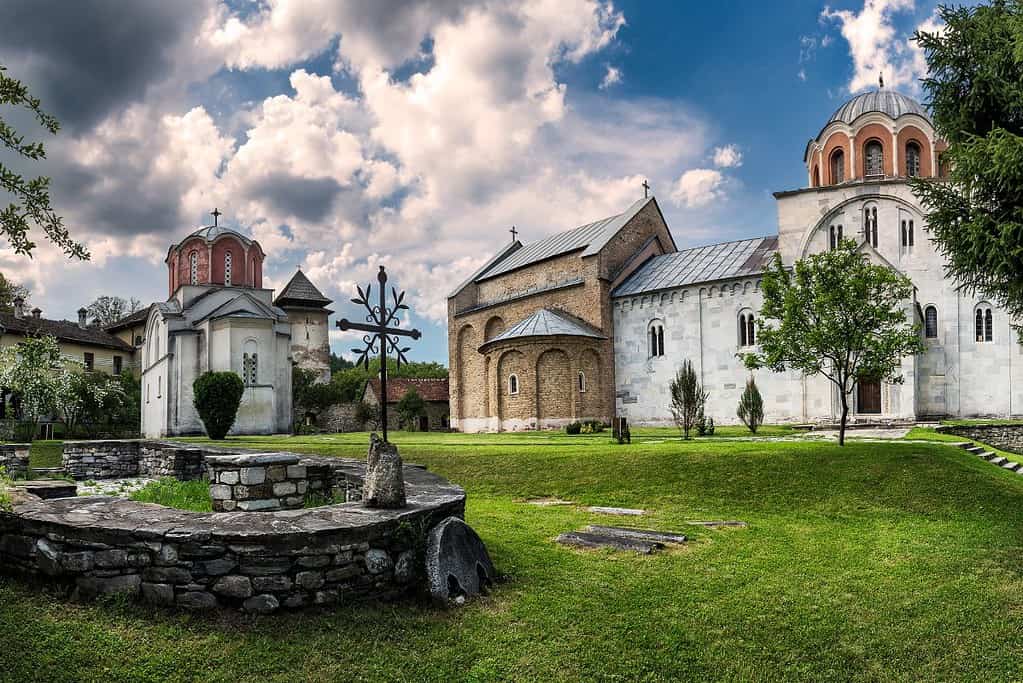
The Studenica Monastery is a renowned UNESCO World Heritage Site located in Serbia. It stands as a testament to the region’s rich spiritual and cultural history. Founded in the 12th century, the monastery complex is a harmonious blend of Byzantine and Serbian medieval architectural styles. Its stunning frescoes, intricately carved stone decorations, and the grandeur of its churches, including the Church of the Virgin and the Church of St. Nicholas, are captivating. The Studenica Monastery continues to be a place of worship and pilgrimage, attracting visitors from around the world who come to admire its beauty and experience its profound spiritual atmosphere.
Serbia UNESCO tentative list
- Djerdap National Park
- The Deliblato Sands Special Natural Reserve
- Mt. Sara National Park
- The Tara National Park with the Drina River Canyon
- The Djavolja Varos (Devil’s Town) Natural Landmark
- Fortified Manasija Monastery
- Negotinske Pivnice
- Smederevo Fortress
- Caričin Grad – Iustiniana Prima, archaeological site
- The cultural landscape of Bač and its surroundings
- Frontiers of the Roman Empire – The Danube Limes
Tours in Serbia
Our choices of tours in Serbia are divided into thematic features such as Belgrade, Novi Sad, and Kopaonik National Park Experience.
